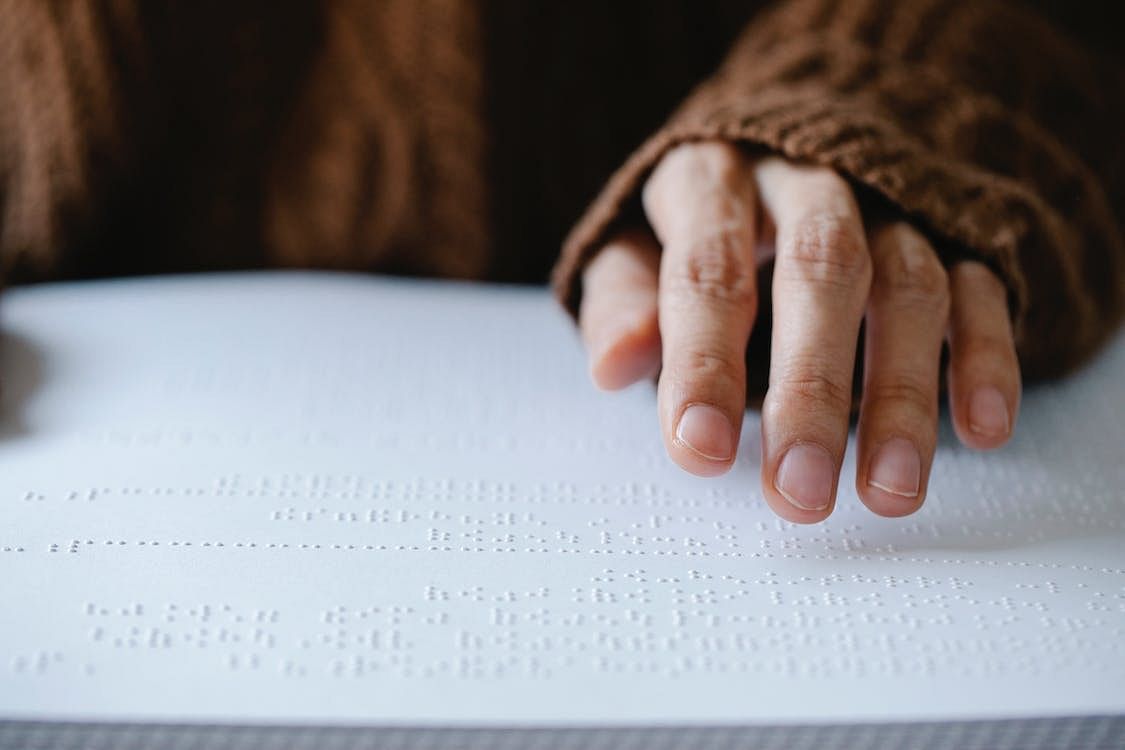BY ALIYA SHAKEEL
The contrivance of Braille dates back to about 200 years and has subsisted to apply to blind people. The contrivance is in this day and age even more get-at-able in today’s world with umpteen assistive technologies to make ingress to information on various tenets undemanding for the blind.
Braille paved the way for admittance to information for people who are blind. People who are blind have more recourse than ever before in terms of access to information through tech and new innovations that integrate Braille.
This seems to be a breakthrough, but we are being heedful in the modernisation process to fend off people from forsaking the intrinsic conceptualisation of learning to read without technological stratagem.
Technology has unequivocally contributed to the burgeoning of Braille. E-braille is now up for grabs. You can access books in unalike electronic formats in Braille and arousal continues.
This unveils that Braille is not going to be tossed as bygone, but it gets a touch of technological amelioration. You may now avail a computer to engender Braille rather than manually transcribe it.
A great deal of electronic gadgets that were hitherto used by people with vision are now accessible to Braille users. Technology and innovativeness are continuously metamorphosing the braille technology in the up to the minute world with multifarious devices, forging the worth of braille to get to more blind people in discrete forms they are amalgamated.
Braille takes up much more space than the traditional alphabet. That’s why braille books are larger than their print counterparts. Not all blind and visually impaired people use the braille system.
If you’re losing your vision but still have some sight remaining, you can start reading Braille. This is only a tactile code. This will only be used if you can read and write it via touch.
Braille is not a language. Braille is an alphabet. This can be used to write almost any language. There are many braille versions i.e. Chinese, Spanish, Arabic, and many other languages. Braille follows only the same rules of grammar, punctuation, and semantics used in the print alphabet of each language.
Nemeth code (special braille code for writing maths) was invented by Abraham Nemeth, a maths professor. He was also blind. By using this code, students can write everything from simple to complex equations. Braille also codes for writing music and chemistry.
Barbier’s code was known as Night Writing and consisted of 12 dots. These could be read by touch. After five years, Louis Braille decreased the number of dots from 12 to six and developed braille.
Legos released braille bricks to help teach children who are blind or visually impaired through play. The bricks are inclusive of all. Students have both the standard print and braille alphabet and numbers.
There is an asteroid named after Louis Braille. The asteroid was discovered in 1992 by NASA. In 1999 it was named 9969 Braille. This is followed by the suggestion of Kerry Babcock. He is a software engineer at the Kennedy Space Centre.
Braille is also on the keypad buttons of drive-through ATMs.
Unique braille readers’ fingers can fly. A sighted person can read 300 words per minute. But, some fast braille readers can read a book at a speed of 400 words per minute. They read braille very quickly in a light touch and using both hands. At the time of reading, one hand reads while the other is poised to start on the next line.
“braille” should not be capitalised. According to the Braille Authority of North America, in braille code, the name should be lowercase. But, we use the proper name of Louis Braille, capitalise “Braille”.
In this new modern time, electronic braille note takers and refreshable braille displays are present for blind and visually impaired people. By this display, those who know braille can browse the internet and read webpages and email, and save and edit their written work.
Braille playing cards are available that enable blind and partially sighted people to enjoy these games. Anyone can improve the reading speed of Braille by continuously practicing reading and writing.
Learning Braille can vary from person to person. It can take time to learn due to the various dot combinations and the need for a person’s fingers to get used to identifying the dots by touch.
(Aliya Shakeel is working as Rehabilitation Therapist in Voluntary Medicare Society Bemina)
DISCLAIMER: The views and opinions expressed in this article are the personal opinions of the author.
The facts, analysis, assumptions and perspective appearing in the article do not reflect the views of GK.






